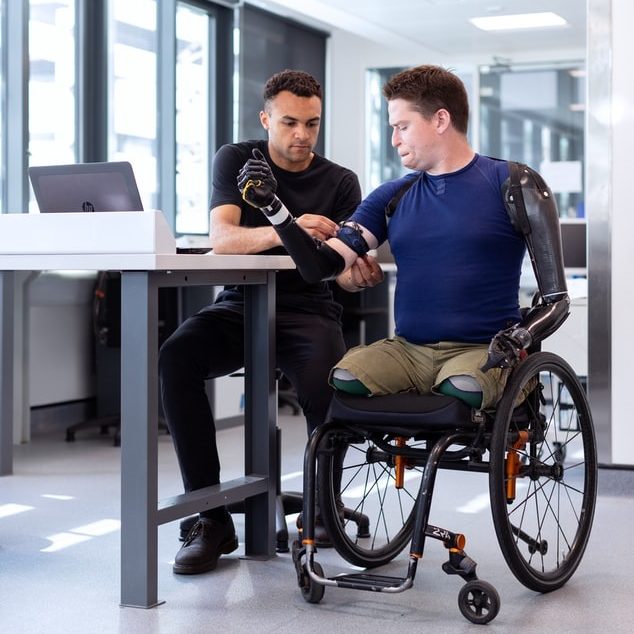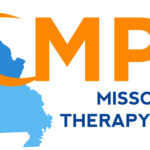From helping someone become able to walk again, to reducing or even eliminating chronic pain, a physical therapist helps patients overcome sometimes immense physical challenges to move on with a normal life.
As a physical therapist, your job is to diagnose and treat patients who have physical conditions that limit their ability to move, function in the world and perform everyday activities. It’s a job for heroes. You are literally empowering other people to transcend whatever physical barrier stands between them and a happy life, whether that means overcoming the debilitating effects of a car accident, managing arthritis or suffering chronic pain.

A physical therapist helps patients avoid costly surgeries that may or may not satisfactorily resolve their condition. Therapists by helping patients overcome chronic pain enable them to live a life without addictive prescription drugs.
You’ll need exceptional interpersonal skills and a caring manner to motivate patients to follow their plan of treatment. These are people you will get to know personally, as physical therapists typically spend more time with their patients than all other healthcare practitioners.
You can also earn a good living while enjoying the tremendous professional satisfaction that comes from improving people’s lives.
Read on to learn more about a physical therapist’s work and salary, plus helpful information about training and certification requirements, licensing and where and how to find clients.
In this article you’ll learn:
- How much money you can make as a physical therapist
- The required training and certifications
- Professional groups to join
- Employment opportunities for physical therapists
- Finding clients
- Plus helpful tips

How much money can you make?
The median annual wage for physical therapists was $89,440 per year, according to the US Bureau of Labor Statistics. The top 10 percent are earning more than $124,740 annually, the bureau reports. Employment prospects look to remain solid for physical therapists, with demand expected to grow 22 percent through 2028. That’s much faster than the average for all occupations. Demand for physical therapy is expected to come mainly from aging baby boomers, who are staying active later in life, but are also susceptible to health conditions such as strokes, which may require physical therapy. Physical therapists will likewise be needed to treat people with mobility issues stemming from chronic conditions, such as diabetes and obesity.
Training and Certification
You’ll need a bachelor’s degree in science or a medical field to get started on the path to becoming a physical therapist. This will be followed by two years in a graduate program studying physical therapy. You may find that a doctoral degree is also required where you live.

A physical therapy license is required in all 50 states in America, although specific rules and regulations vary depending on where you live. You’ll want to check the requirements for your state using this handy reference guide. Then you’ll be prepared to evaluate which training and certification program will be best-suited to meet your goal of getting that state license.
After completing your training and earning a license, most states will require you to complete a residency program in a clinical setting lasting at least a year. During this time you’ll work with patients under the supervision of physicians and other licensed physical therapists.
Most states have set these standard requirements for licensure:
Pass the National Physical Therapy Examination (NPTE), which is administered by the Federation of State Boards of Physical Therapy (FSBPT). This is a computerized, multiple-choice exam. You may take the exam three times in a 12-month period if you don’t pass on the first try. The Practice Exam and Assessment Tool (PEAT), also developed by the FSBPT, allows applicants to practice taking a test that resembles the NPTE.
Other licensing requirements may include a law exam and a criminal background check. Most states also require a certain number of continuing education credits before you can renew a license to practice physical therapy. This ensures practitioners stay current in the field.
Here’s a deep and diverse list of schools and training programs for physical therapists.

An overview of what you’ll learn during your training:
- How to consult with patients to learn about their physical condition and symptoms
- How to perform tests that identify physical issues and their severity
- Correctly diagnosing movement problems and developing a treatment plan
- Teaching patients techniques for therapeutic exercise and correct use of any equipment
- Stimulating and massaging affected muscle groups to promote healing
- Helping patients learn to move about with wheelchairs or walkers
- How to maintain and protect patient records, while keeping track of therapy progress
- Advising patients and families about in-home treatment options and exercises to work on when the patient is not in a therapy setting.
Professional Groups to Join
Joining a professional association demonstrates commitment to your career. It also enhances your credibility with customers. In addition to those benefits, joining a professional group gives you networking access to other experts in your field. You can trade tips and ideas, and learn about job openings. Most professional groups also offer continuing education opportunities, meetings and conferences and access to affordable insurance plans.
Here are three of the top organizations for professional physical therapists:
American Academy of Physical Medicine and Rehabilitation is the national clinical strength organization representing more than 9,000 practitioners who are masters in physical medication and recovery (PM&R). These professionals treat a wide assortment of ailments affecting the cerebrum, spinal cord, nerves, bones, joints, tendons, muscles, and ligaments.

The American Academy of Physical Therapy is a non-profit organization whose strategic goal is to assist poor and disadvantaged African-Americans and other minorities by:
- Promoting new and innovative programs in health delivery and disease prevention
- Encouraging minority students to pursue careers in allied health professions
- Performing clinical research related to health conditions found within minority communities.
American Physical Therapy Association is a professional organization representing 100,000 physical therapists, physical specialist aides (PTAs), and students. APTA’s mission is to improve the wellbeing of people by advancing the physical therapist practice through continuing education, and by expanding awareness of physical therapy’s role in the country’s medical services.
Employment
Because physical therapists typically work in private medical offices and clinics, hospitals, and nursing homes, these are the places you should investigate first. Most employers will ask for proof of licensure and academic/training credentials and certifications, so you should make photocopies to hand out with your résumé. Call the business where you are interested in working and ask if it will be okay for you to drop off your materials in person. If they prefer that you mail your information, always follow up with a phone call within a week.

Use the networking power of your professional memberships to find jobs.
Don’t overlook online sites such as Indeed.com and Ziprecruiter, which can yield job openings, but keep in mind that laws regulating physical therapy will vary from state-to-state. If you move to another state, you’ll have to meet their requirements to practice.
Finding Clients
If you’re going into private practice, business cards and a basic website should be the core of your marketing toolkit as a physical therapist. The website need not be fancy or expensive, just attractively designed, with photos of your studio (get permission from any clients who are visibly recognizable). The website must also include your business location and contact information at the top of every page.
In addition to your business website, the next thing to do is create an Instagram account to showcase your physical therapy practice. Instagram is the #1 online venue for creative professionals to promote themselves. It’s a free marketing tool that’s always working on your behalf.

Next, set up a Facebook page for your physical therapy practice so that people searching for this therapy can find you. This, too, is a free service that can benefit your business by putting you front-and-center of potentially thousands of customers.
Other strategies for attracting new business:
- Create a referral program with discounts for loyal customers who send new clients to you.
- Ask customers to review your physical therapy services online. According to a recent survey, 90% of people say their buying decisions are influenced by positive online reviews.
Good to know:
5 tips for physical therapists on encouraging and motivating your patients.
Encourage patients to wear an activity tracker
Whether a smart watch or a basic pedometer, an activity tracker provides a tangible measurement of effort leading to progress. Plus, some patients may be more motivated to do their exercises if they have a gadget that shows their results.
Don’t let chronic pain control your life
One of the key goals of physical therapy is to eliminate or at least reduce and manage chronic pain. Encourage your patients to tell you if they experience unusual discomfort.
Practice strength training
Even patients in their 60s and 70s can benefit from weight lifting that’s appropriate to their abilities. Before they set out to pump iron, develop a plan with them to set and meet goals.
Always reinforce the importance of home exercise
Patients are not with you in the clinic 24 hours a day. That doesn’t mean they should be working on their therapy outside the clinical setting. Explain the importance of homework and how following the exercises outside of the clinic can speed recovery and lead to a healthier life.
Be patient with your patients
You’ll be dealing with individuals facing significant mobility issues and physical limitations. Some may be in chronic pain as a result of an accident. Suffering in pain is a powerful temptation for a patient to quit or give up. Don’t let them. Be patient. Be firm. Explain the benefits of what the two of you are doing together to improve your patient’s life.
If you enjoyed this article, check out some more great PocketSuite.io content that can help you grow your career as a physical therapist. Here’s a great place to start.PocketSuite has thousands of business owners who all started where you are right now. Our community is always happy to help you ramp up, grow your client base, and achieve your income goals, both within the PocketSuite app and as part of our exclusive Facebook Community Group. PocketSuite’s vision is for any professional to be able to work for themselves and make a great living. It starts here. It starts with you. It starts today. Let’s get started, download PocketSuite now! Feel free to reach out with any questions (we’d love to hear from you)! Text us @ (415) 841-2300.



